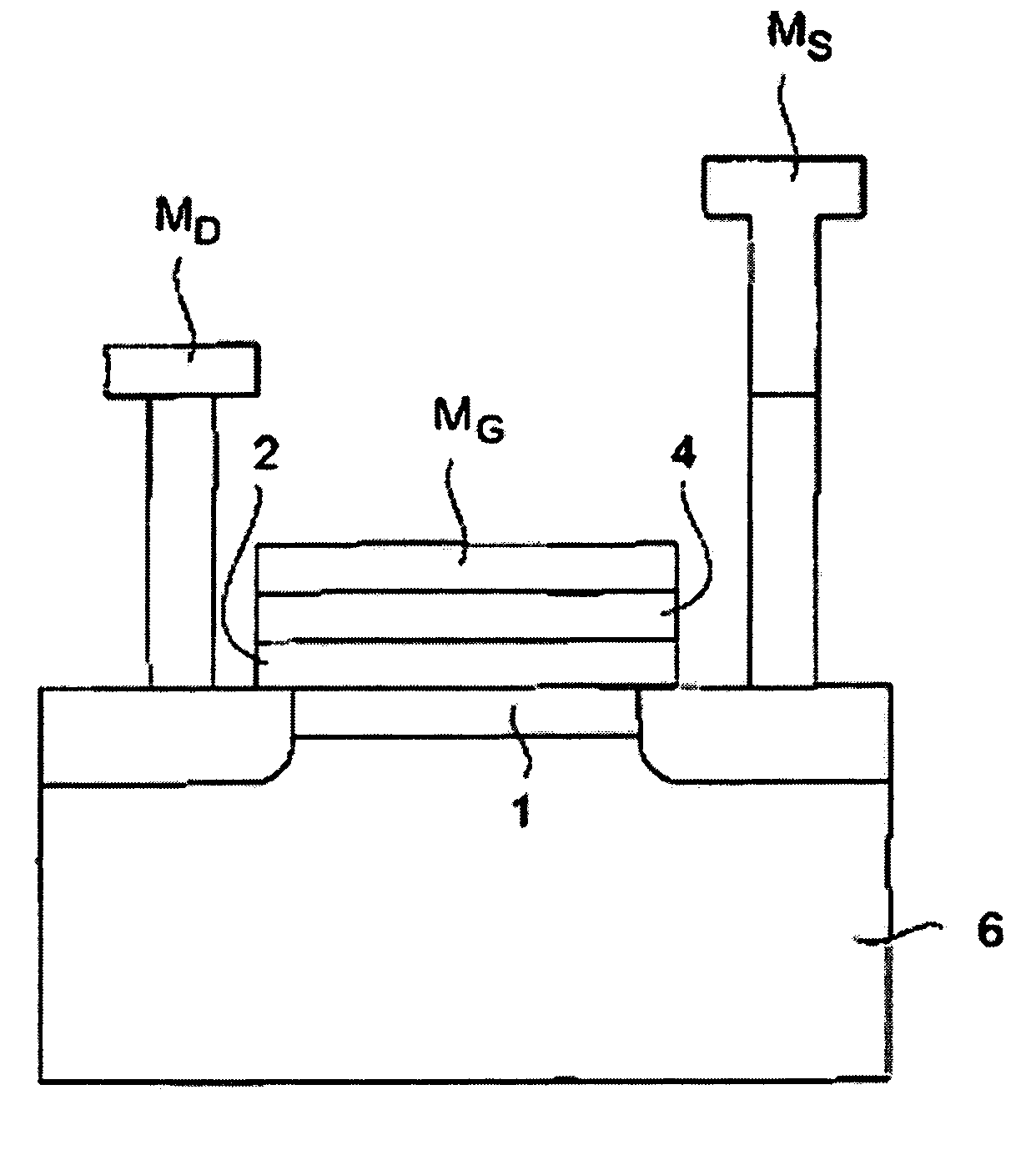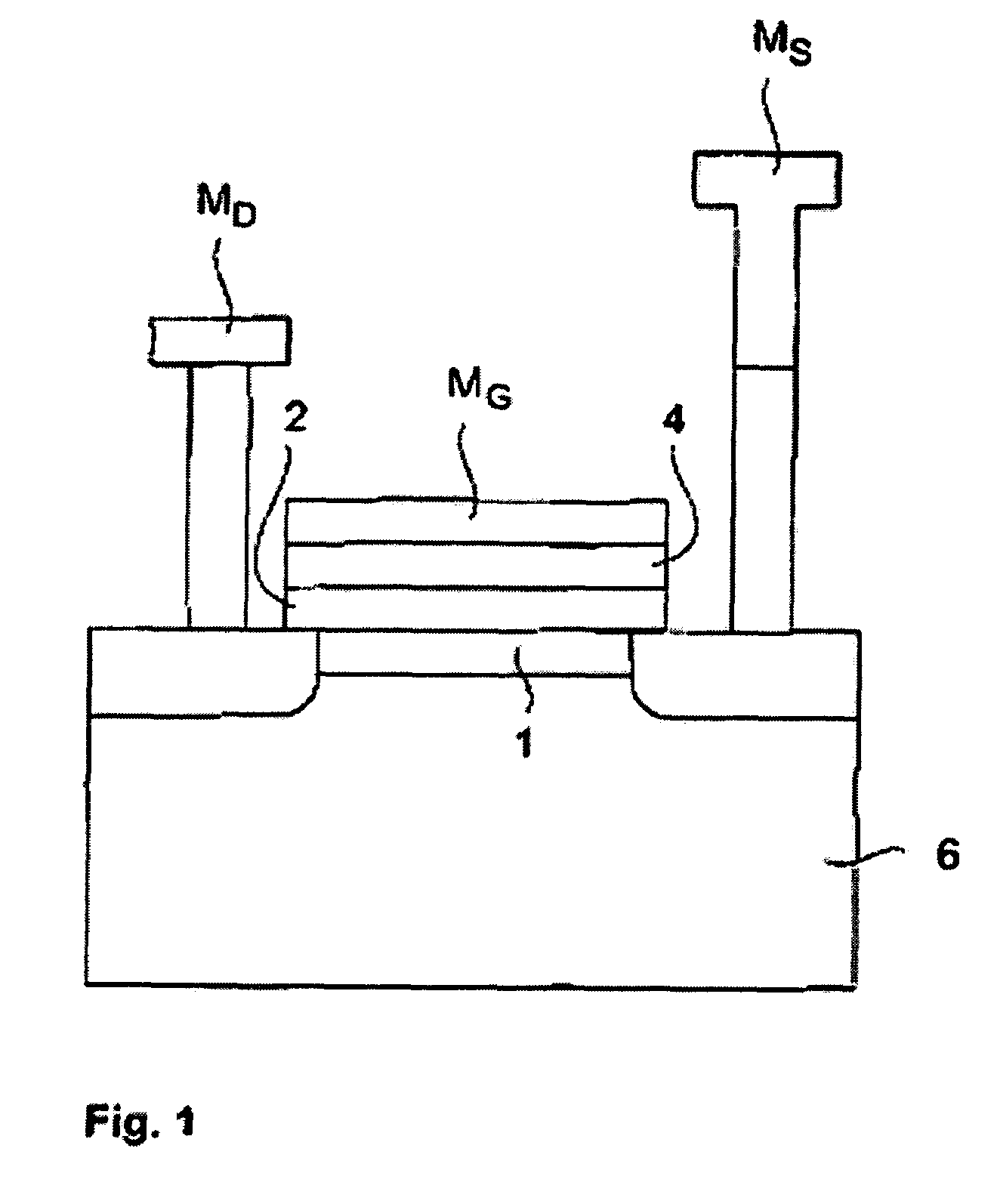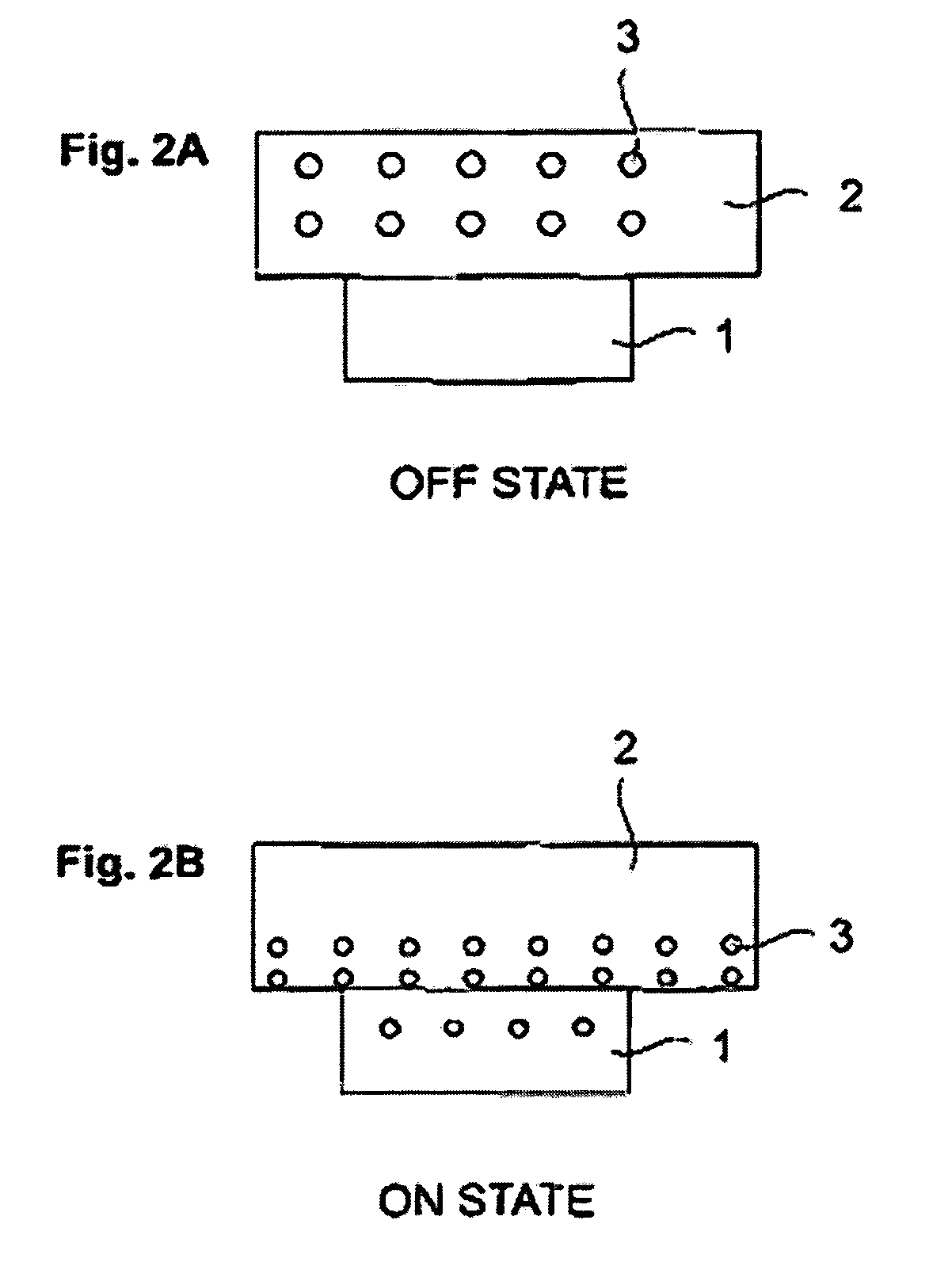Programmable-resistance memory cell
a memory cell and resistance technology, applied in the direction of bulk negative resistance effect devices, electrical apparatus, semiconductor devices, etc., can solve the problems of time-consuming conditioning process, inability to control the conductor path, and required conductors, and achieve the effect of low operating power
- Summary
- Abstract
- Description
- Claims
- Application Information
AI Technical Summary
Benefits of technology
Problems solved by technology
Method used
Image
Examples
Embodiment Construction
[0022]Within the description, the same reference numerals or signs have been used to denote the same parts or the like.
[0023]Reference is now made to FIG. 1, which schematically illustrates an embodiment of the present invention. As can be seen from FIG. 1, in an embodiment of the present invention, there is provided a memory cell 10 with three terminals: a source electrode MS, a drain electrode MD and a gate electrode MG all of which are formed on a substrate 6. The substrate 6 may, for example, pertain to CMOS technology and be made of silicon-dioxide (SiO2). The source electrode MS and the drain electrode MD, which are shown as being arranged laterally relative to each other, are connected by a coupling layer 1, which is chosen to comprise a transition-metal oxide exhibiting a filling-controlled metal-insulator transition property. The gate electrode MG is formed so as to comprise an oxygen-ion conductor layer 2. By oxygen-ion conductor layer, it is meant that such a layer compri...
PUM
 Login to View More
Login to View More Abstract
Description
Claims
Application Information
 Login to View More
Login to View More - R&D
- Intellectual Property
- Life Sciences
- Materials
- Tech Scout
- Unparalleled Data Quality
- Higher Quality Content
- 60% Fewer Hallucinations
Browse by: Latest US Patents, China's latest patents, Technical Efficacy Thesaurus, Application Domain, Technology Topic, Popular Technical Reports.
© 2025 PatSnap. All rights reserved.Legal|Privacy policy|Modern Slavery Act Transparency Statement|Sitemap|About US| Contact US: help@patsnap.com



